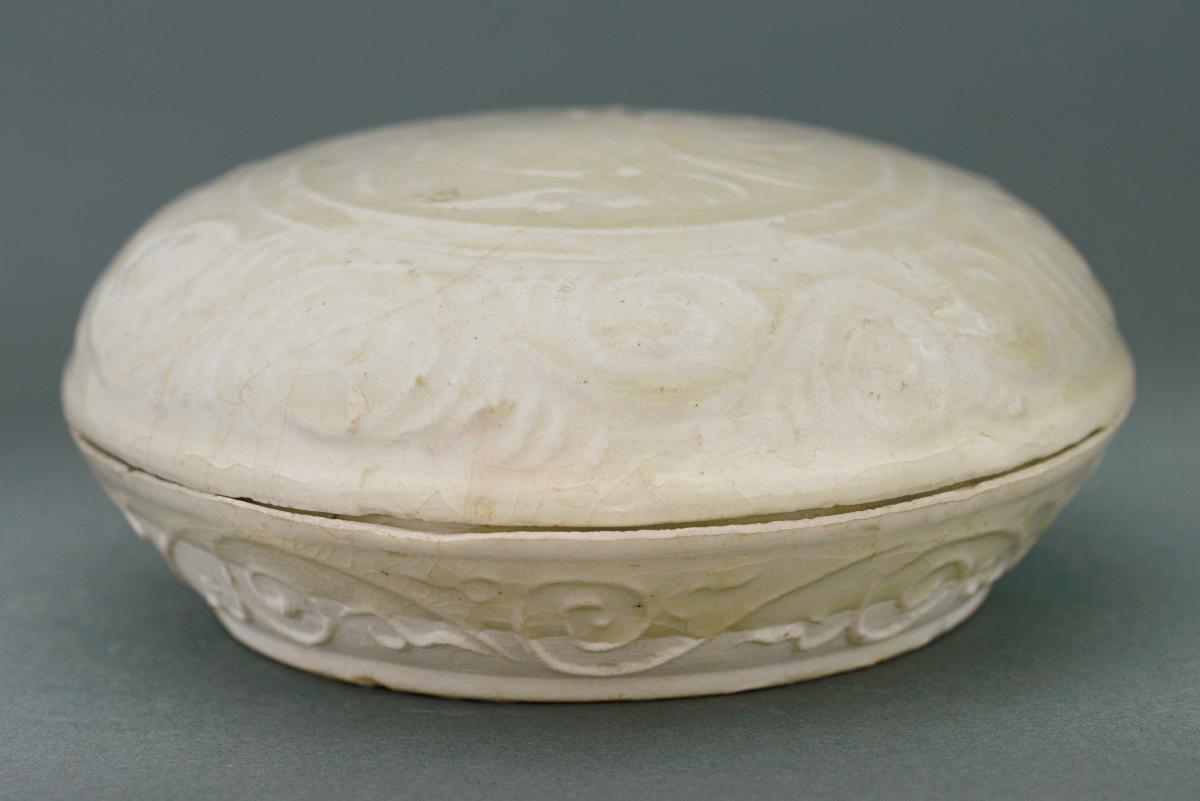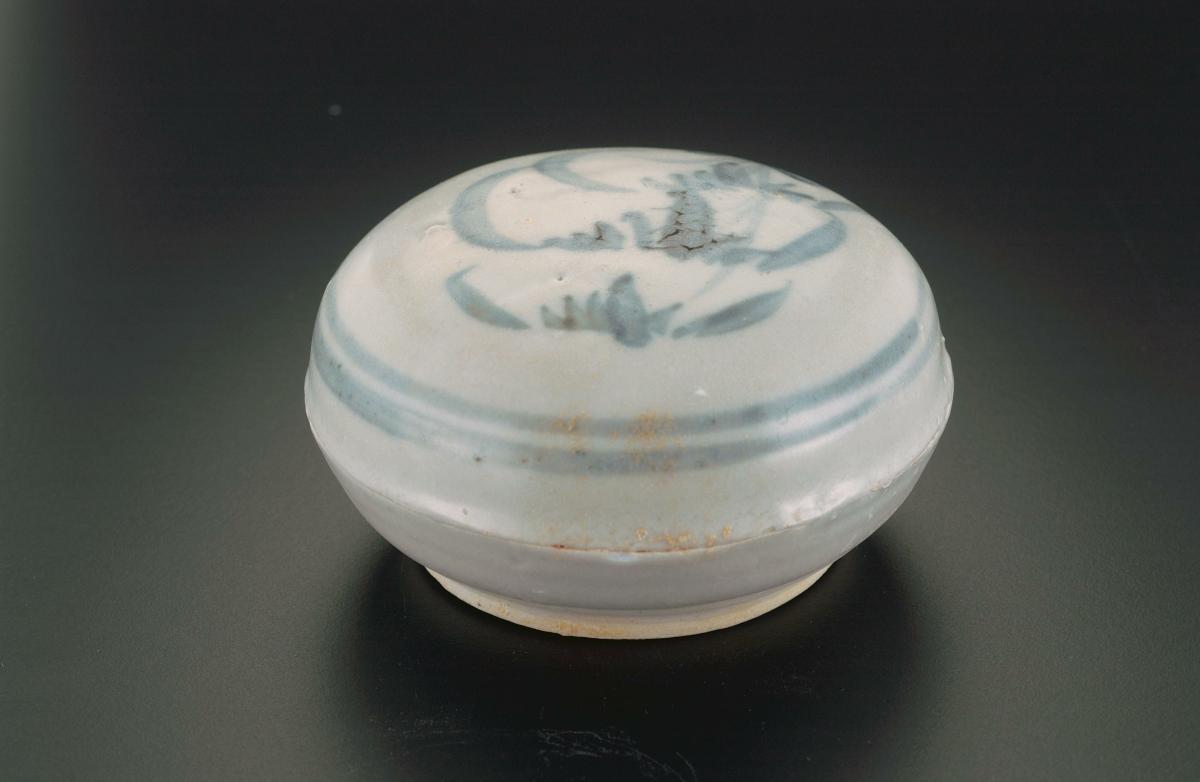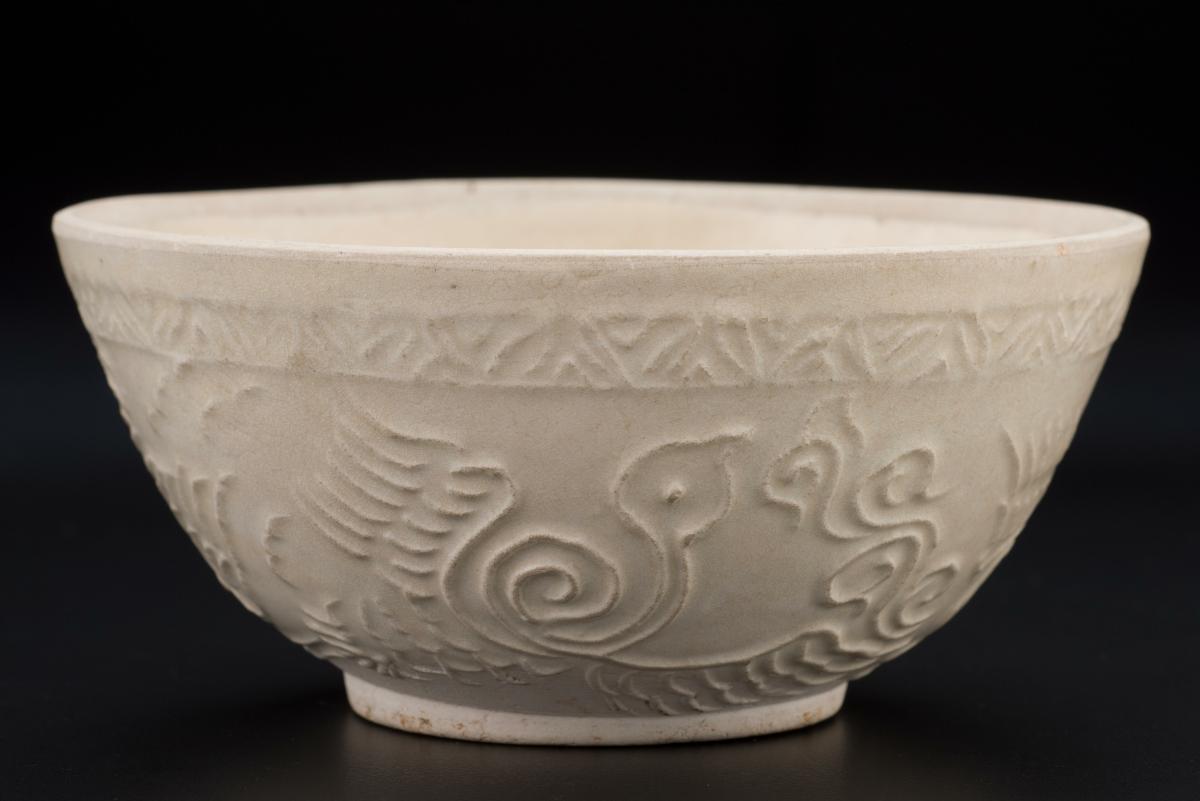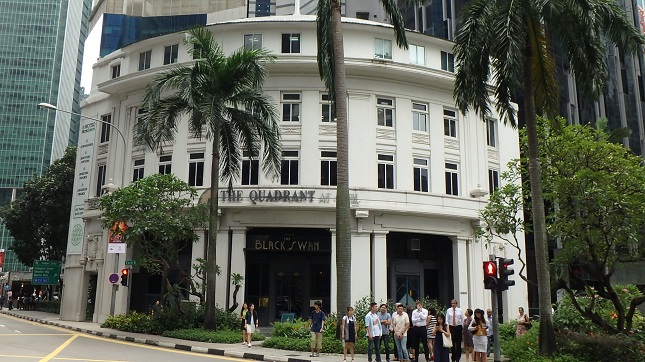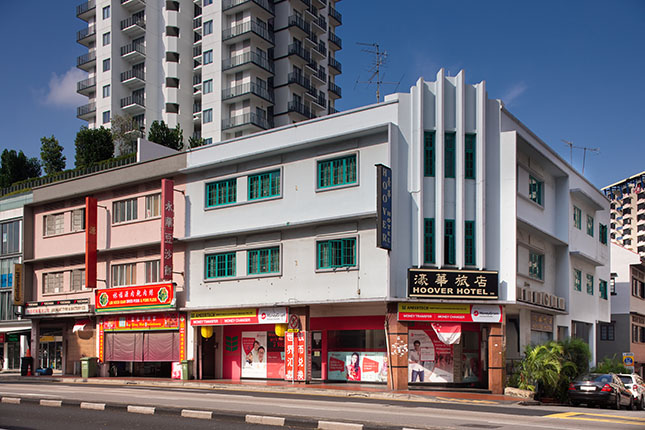This box has an ornate scrolling design in the form of a fine linear relief, moulded onto the cover and base. The somewhat degraded ivory glaze stops just short of the base, revealing the characteristic chalky white Dehua porcelain body. This design probably takes its inspiration from a type of carved lacquer ware known as 'guri' or 'tixi'. Scroll patterns based on the classic scroll or cloud collar (ruyi) motifs typify these lacquer wares. They have been found in graves dated to the Southern Song (1127-1279 CE) and continued to be made during the Ming dynasty (1368-1644 CE).Dehua, located on the southeast coast of Fujian province, is well known for its production of white porcelain, known to Europeans as 'blanc de Chine'. The earliest Dehua porcelain was produced as early as the 14th century but the production and quality of these porcelain peaked around the 17th and 18th centuries.





